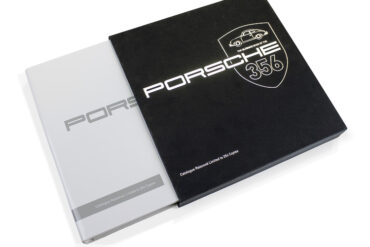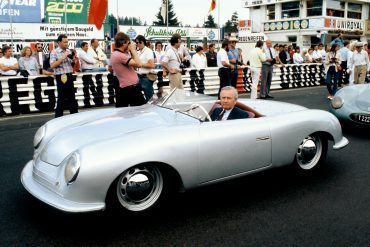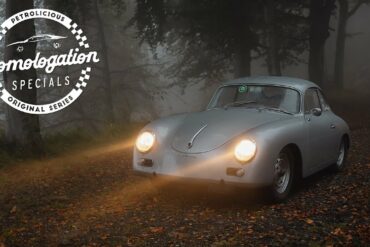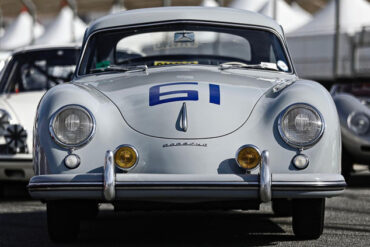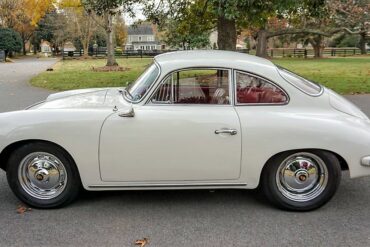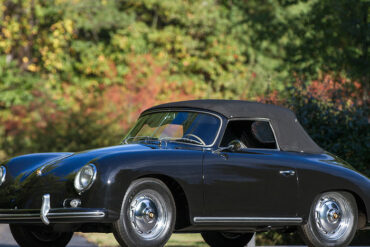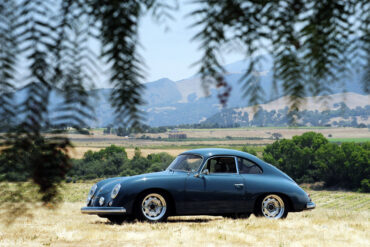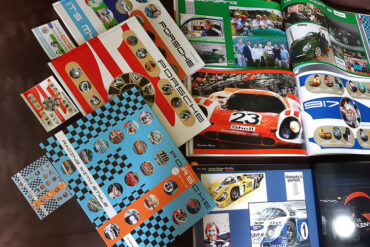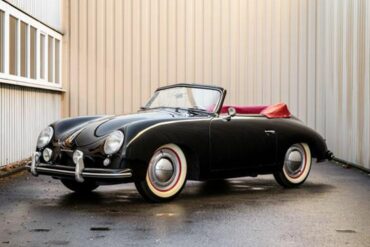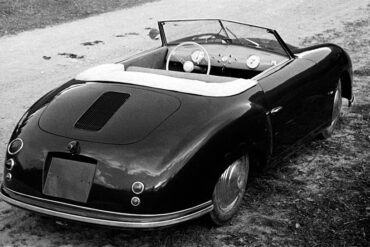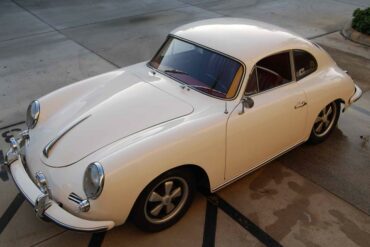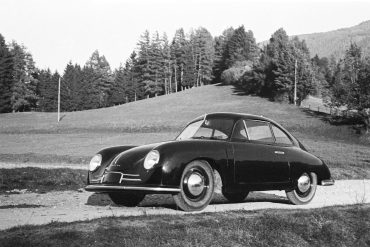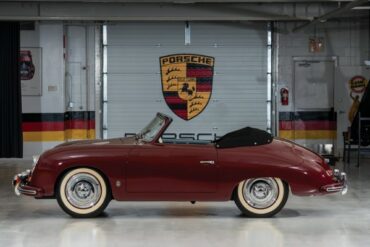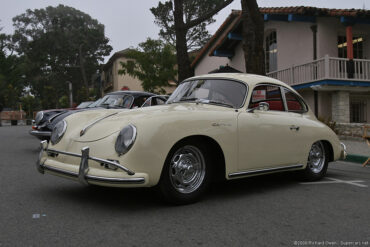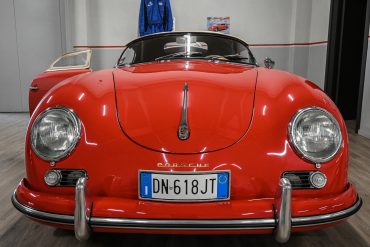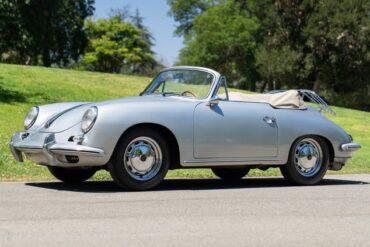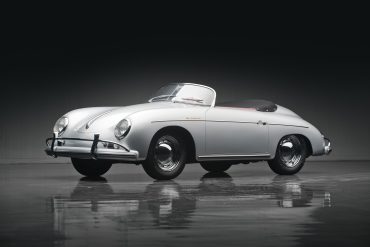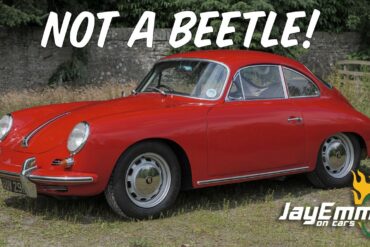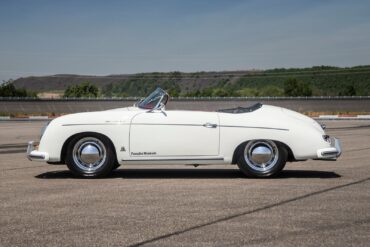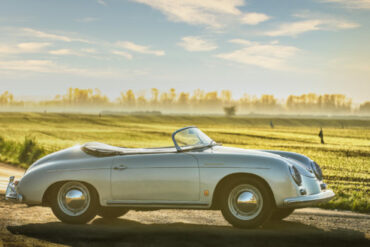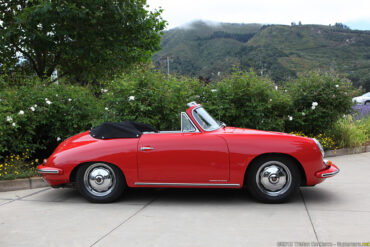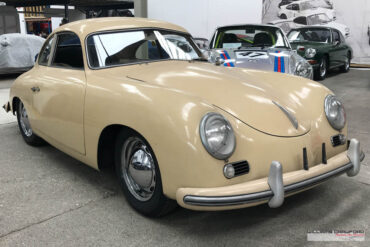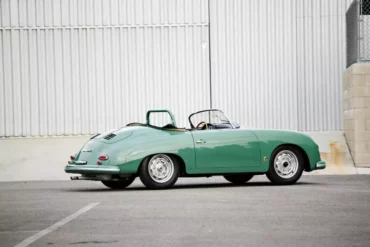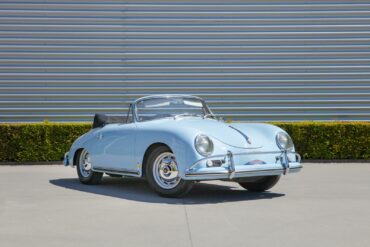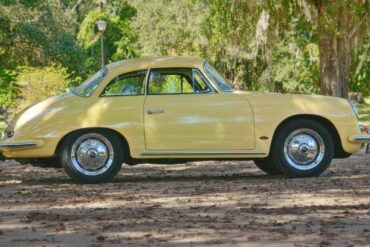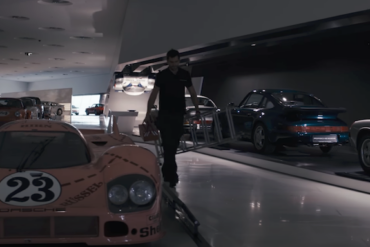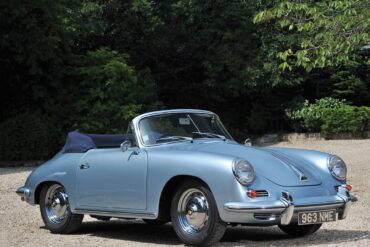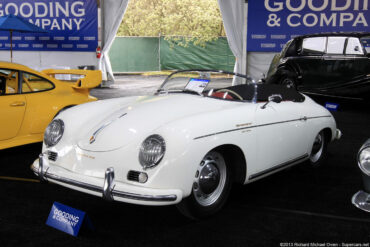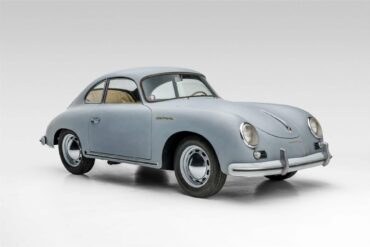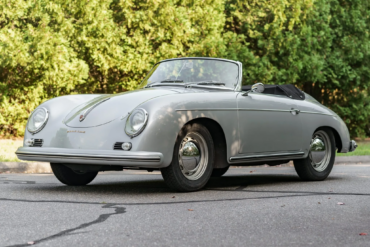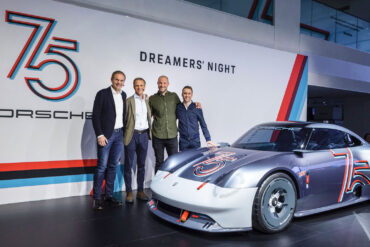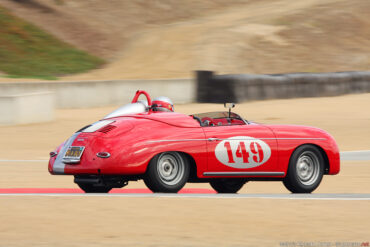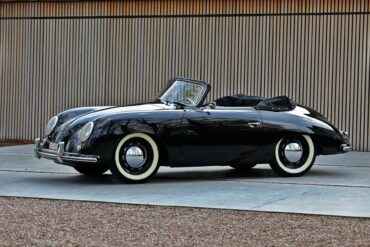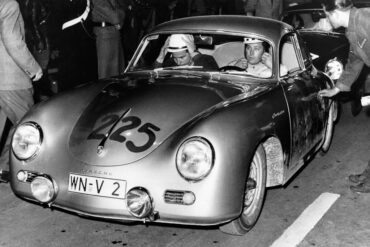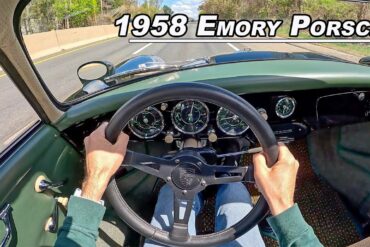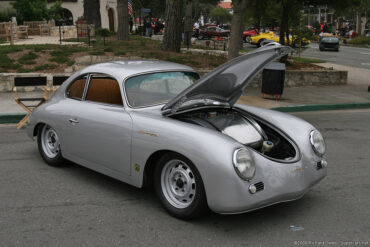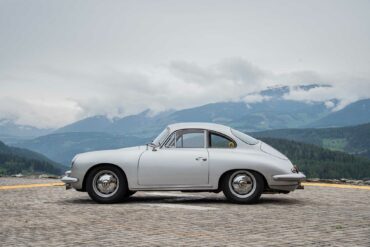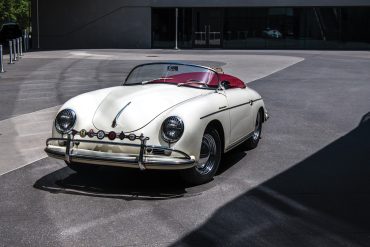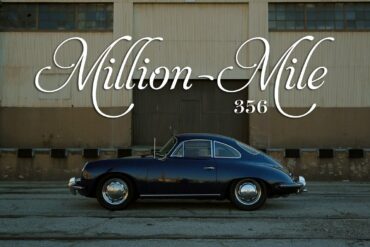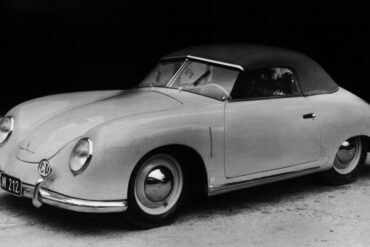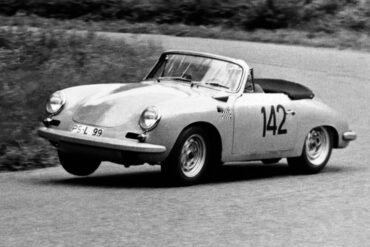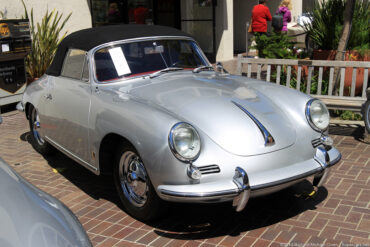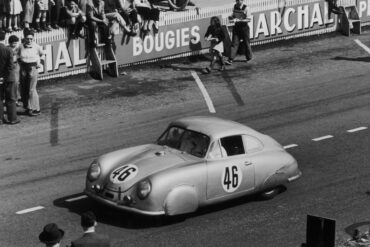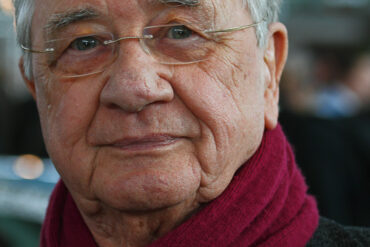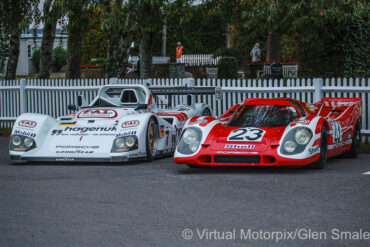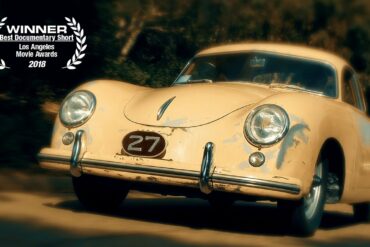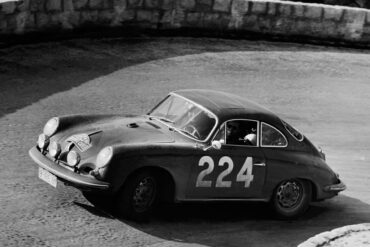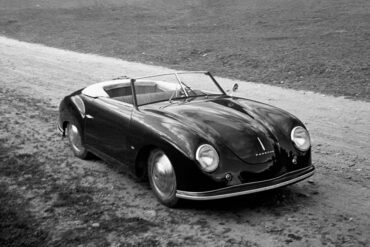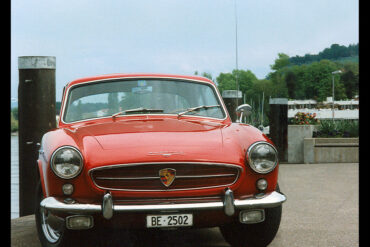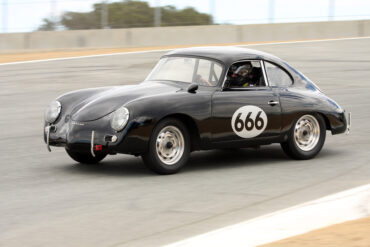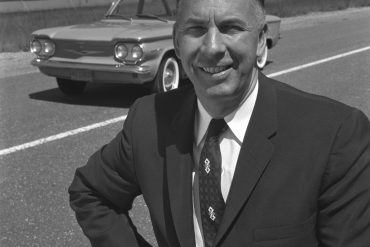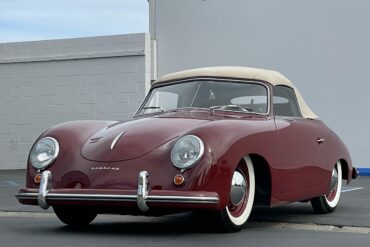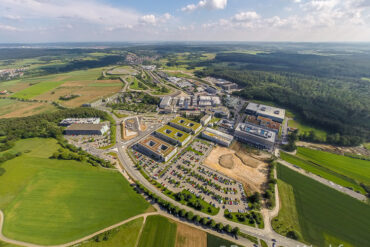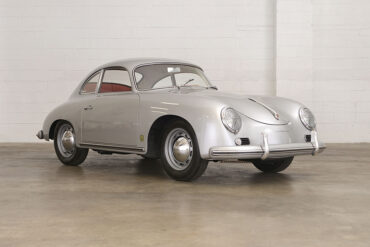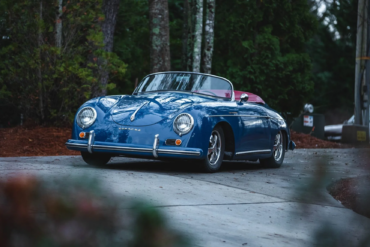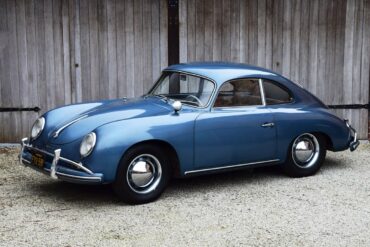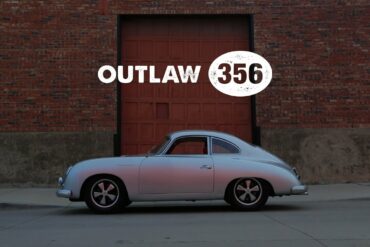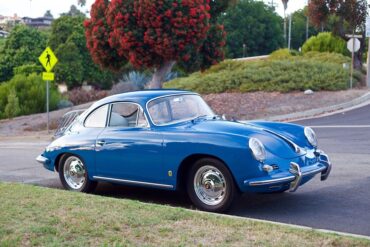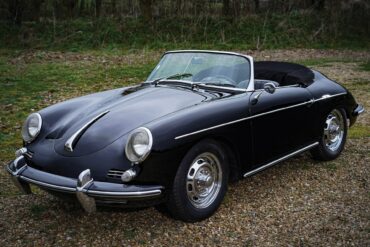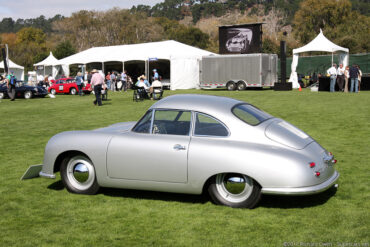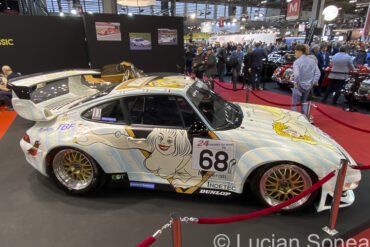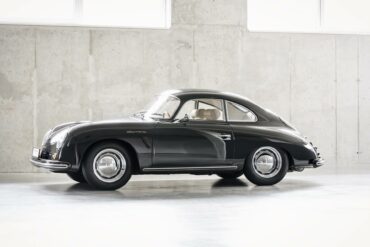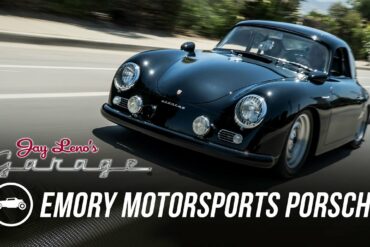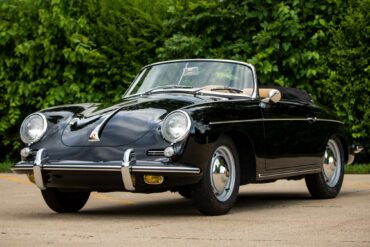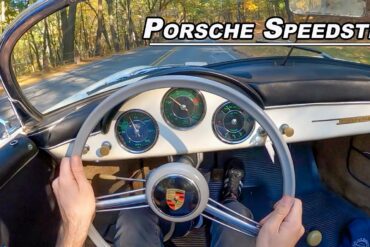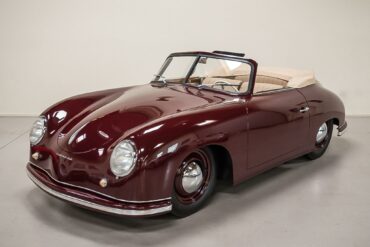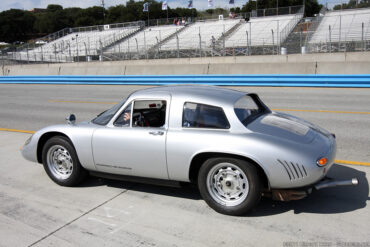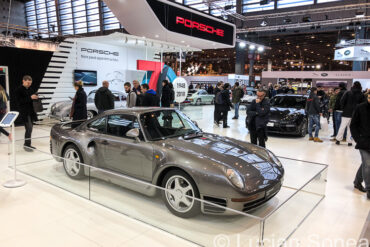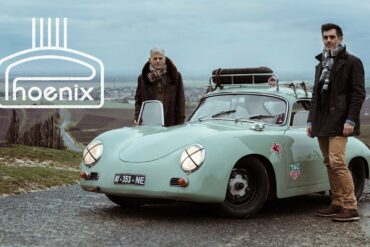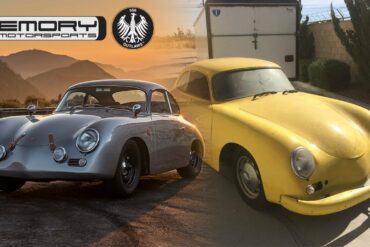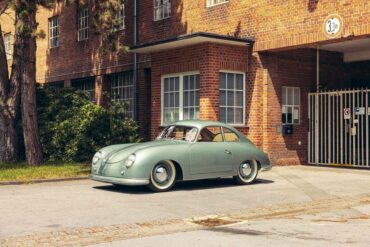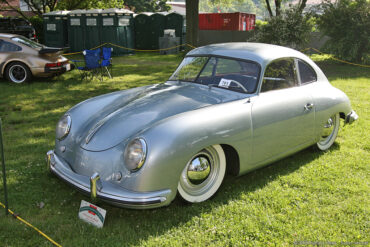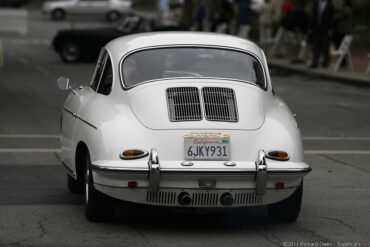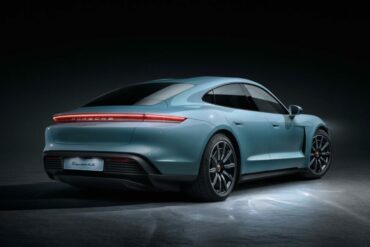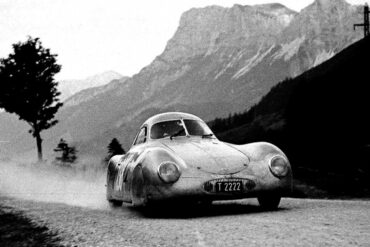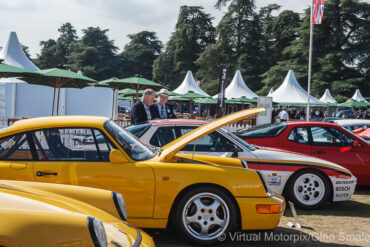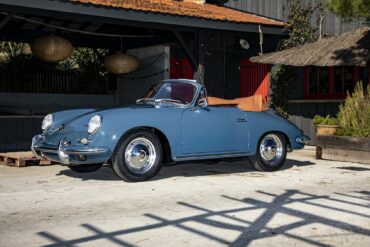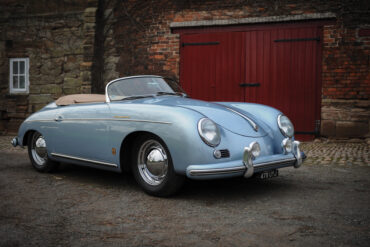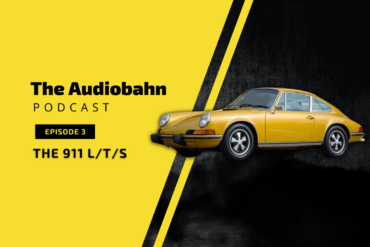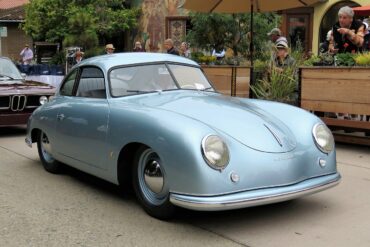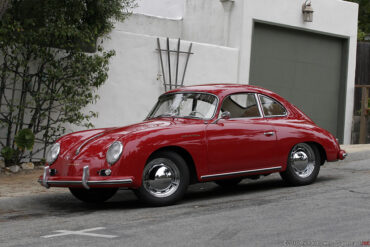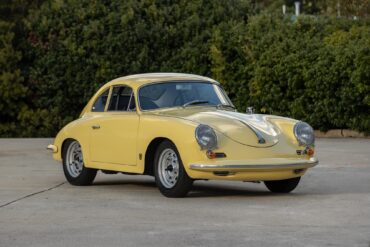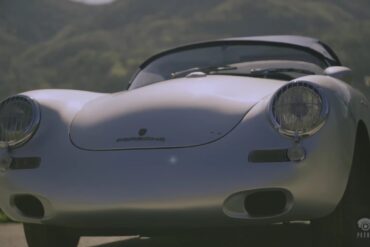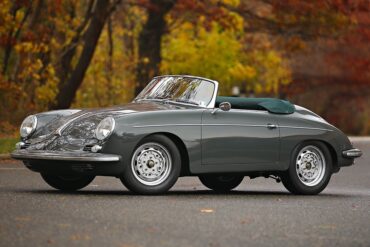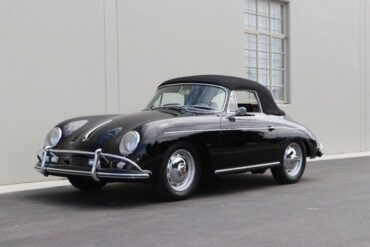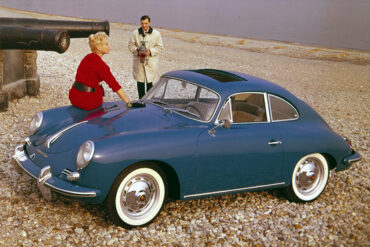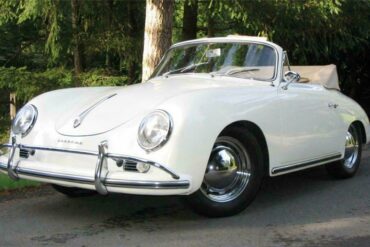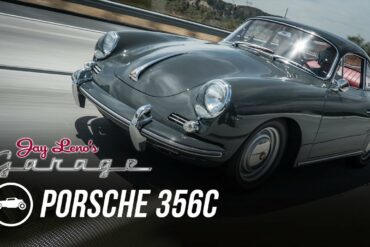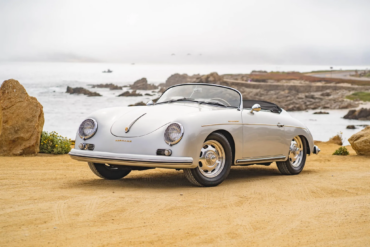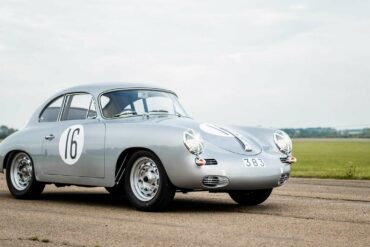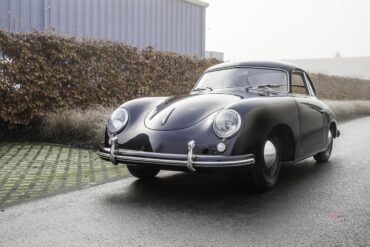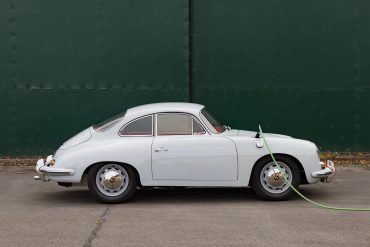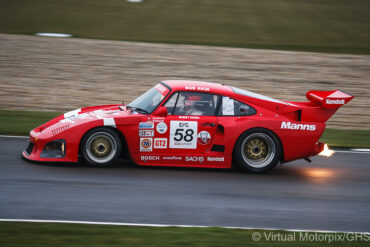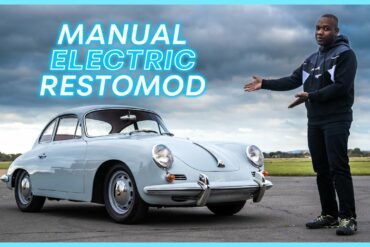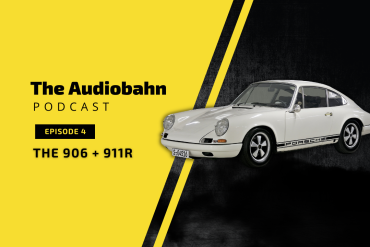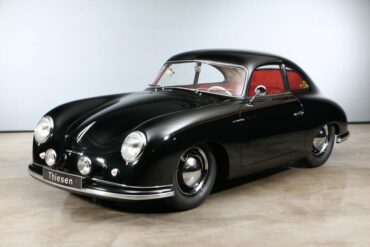The Ultimate Book of the Porsche 356 by Brian Long © Veloce Publishing Limited Brian Long’s original book on the...
The Porsche 356/1 was the first real car created by Ferdinand "Ferry" Porsche. This prototype car was a two-seater open roadster with a mid-mounted, air-cooled flat-4 engine of 1,131 cc displacement. While the body was an original design, most of the mechanicals were from the Volkswagen Beetle. Only one 356/1 was made.
Four-Cam Coupe Porsche 356 Carrera GS/GT Driven The Porsche 356 brought the automaker into a new era. The model started...
Kim Copperthite watches the Porsche 919 Hybrid Evo during its record run at the Porsche Rennsport Reunion VI, Laguna Seca,...
Porsche 356 Spare Parts Catalogs (1960 – 1965 Model Year) Porsche 356B/356C These official Porsche PET Diagrams and codes for...
1956 – 1959 Porsche 356A/1600 Super Cabriolet Technical Specifications Model Year 1956 – 1959 Built At Stuttgart, Germany Body Stylist...
1954 – 1955 Porsche 356/1300 Super Coupe (Pre-A) Pictures & Gallery...
Racing Porsche with Style © Stéphane Coradi This is Stéphane Coradi’s third publication, and the third of his books that...
1953 – 1955 Porsche 356/1500 Super Cabriolet (Pre-A) Technical Specifications Type Series Production Car Production Years 1953 – 1955 Built...
Porsche 356/2 Gmünd Cabriolet Pictures Of the 50 cars made in Gmünd, only eight were built up as cabriolets. Each...
1959 – 1963 Porsche 356B/1600 S Coupe Pictures & Gallery...
With lessons learned from 356 No. 1, Porsche developed the 356/2 as a production-ready version. The biggest concession to useability was repositioning the engine back behind the rear wheels as the original VW design. Like 356 No. 1, 356/2 was built as two-seat roadster using VW parts.
1954 – 1955 Porsche 356/1300 Split-Window Cabriolet (Pre-A) Technical Specifications Type Series Production Car Production Years 1954 – 1955 Built...
1959 Porsche 356A/1600GS Carrera Technical Specifications Type Series Production Car Coachbuilder Reutter Karosserie Engineers Klaus von Rücker Engine Type 692/2...
This immaculate auto is in the collection of Brescia Classic Cars in Italy. It’s #48 of only 200 similar cars...
1964 Porsche 356C/2000GS Carrera 2 Cabriolet Technical Specifications Model Years 1964 Built At Stuttgart, Germany Engine 2.0 L Aircooled Flat...
Introduced in late 1954, the Porsche 356 A Speedster continued as a stripped-down, affordable, sports-oriented convertible within the 356 A...
Porsche 356C Driven In today’s video, we don’t learn much – but we do get to see me go rather...
Porsche 356 Production & Chassis Numbers (1950 – 1965) The evolution of the 356 was constant throughout its production history....
A True Porsche Specimen The Porsche 356A Speedster is a beautiful car and an important part of Porsche’s long motoring...
1962 – 1963 Porsche 356B/2000GS Carrera 2 Pictures & Gallery...
1954 – 1955 Porsche 356/1300 Split-Window Coupe (Pre-A) Pictures & Gallery...
A Beautiful Piece of Porsche History The 1960 Porsche 356B Roadster is an automotive icon. The vehicle is one of...
1957 – 1958 Porsche 356A/1500GS Carrera GT Speedster Pictures & Gallery...
1956 – 1957 Porsche 356A/1300 Cabriolet Technical Specifications WHAT BODY STYLE? 2 door fixed-head coupé with 2+2 seats HOW LONG?...
1959 – 1963 Porsche 356B/1600 Notchback Coupe Pictures & Gallery...
Enjoy a close-up experience of the history of Porsche at the Porsche Museum, at night when the museum comes alive!...
1959 – 1963 Porsche 356B/1600 S Cabriolet Pictures & Gallery ...
1956 – 1958 Porsche 356A/1500GS Carrera Speedster Pictures & Gallery...
1956 – 1958 Porsche 356A/1500GS Carrera Coupe Technical Specifications Type Series Production Car Built At Germany Coachbuilder Reutter Karosserie Price $...
Produced in 1959 only, the Porsche 356 Convertible D was the replacement for the 356 A Speedster. In many ways this reflected...
Celebrating the birth of a legendary brand In 1948, Ferry Porsche realized his dream of a sports car: with his...
1959 Porsche 356A/1600 Convertible D Pictures & Gallery...
1953 – 1955 Porsche 356/1500 Super Cabriolet (Pre-A) Pictures & Gallery...
In May of 1957, Porsche offered two distinct versions of the Carrera, one called the de Luxe for the street and this model, the Gran Turismo, for the track. The main difference between the two models was weight. The Carrera GT was a purpose-built car with little on board amenities. For instance, no heater was fitted giving the car its 'icebox' nickname. Furthermore, the interior was stripped of sound deadening, side windows were replaced by pull-up Perspex units and only simple door panels were fitted.
Rod Emory and his team at Emory Motorsports are experts in restoring and customizing Porsche 356 coupes and convertibles. Although...
1957 – 1958 Porsche 356A/1500GS Carrera GT Coupé Pictures & Gallery...
Issimi is currently offering for sale a 1963 Porsche 356 B Carrera 2 GS whose engine has been rebuilt by...
Designed by Ferry Porsche, the 356 was based on the Volkswagen created by his father, Ferdinand Porsche. Like the ‘Beetle’,...
This is what it is all about It takes a lot of driving, work, and a little bit of luck...
1954 – 1955 Porsche 356/1300 Split-Window Cabriolet (Pre-A) Pictures & Gallery...
As with the earlier versions, the Carrera was offered both in a Carrera GT Deluxe version for the road and the Carrera GT for racetrack duties. Unlike these earlier models, the new car benefited from the 2.0 liter engine introduced as the Carrera 2 was unveiled in September 1962. The 2.0 Carrera used a variant of the Type 547 engine with a larger bore and stoke, having 1966cc.
1959 – 1963 Porsche 356B/1600 Cabriolet Pictures & Gallery...
In 1950, eleven remaining Gmund chassis were assembled after the factory returned to Germany and converted to SL (Sport Leicht) racing specification. They received 1,086-cc engines, enlarged fuel tanks, louvered quarter-window covers, wheel spats, streamlined aluminum belly fairings, and a pedestal-mounted shifter. Three Type 356/2 cars raced at Le Mans in 1951; two crashed, but 356/2-063 performed flawlessly, winning the 1,100-cc class.
Hans Herrmann at the Retro Classics in Stuttgart, Germany 2010 Hans Herrmann, one of the most successful and popular racing...
(From L-R) 1995 Porsche WSC-95 in which Tom Kristensen registered his first Le Mans win (1997) and the first Porsche...
1953 Porsche 356 America After decades collecting dust in a storage building in the California desert, a 1953 Porsche 356...
Amongst Porsche 356 enthusiasts, perhaps no model is more coveted than a C-Series Carrera 2. The Carrera 2 represents the culmination of Porsche’s racing technology fitted into a road car package and the ultimate performance-first sports car in the 356 model lineup. The 1,966-cubic centimeter, mechanically complex four-cam Type 587/1 engine was the most powerful unit that Porsche had ever created for a production car, developing 130 brake horsepower at 6,200 rpm.
Of the 52 cars made in Gmünd, only eight were built up as cabriolets. Each was outsourced for its body and interior construction. Six cars were sent to Beutler who constructed them with a slightly different shape than the factory coupes. Included was a kicked-up rear fender line which was used on several of the Buetler cabriolets.
Ferry Porsche had in fact requested Swiss technicians to make a less sporty and more elegant version of the 365 B and thus the 1600 Beutler Coupè was born. This project is a 2+2 based on a Porsche 1600. Like the Porsche, the car is built on a VW platform, but includes Porsche elements such as the brakes and the engine. It was built in 5 copies before production was stopped in 1957 due to a change in commercial strategies by the German company.
1956 – 1959 Porsche 356A/1600 Coupe Pictures & Gallery...
People usually recall the Chevrolet Corvair as the car that was “unsafe at any speed” which is rather unfair because...
1951 – 1953 Porsche 356/1300 Split-Window Cabriolet (Pre-A) Pictures & Gallery...
Weissach – Porsche Werk 8 – on 9 June 2016 By the late 1950s, the German Wirtschaftswunder was well underway...
1956 – 1959 Porsche 356A/1600 Coupe Technical Specifications Production Years 1956 – 1958 Released At 1955 Frankfurt Motor Show Built...
Live now on Bring A Trailer is fantastic example of a 1955 Porsche 356 Speedster finished in Oslo Blue over...
1956 – 1957 Porsche 356A/1300 Super Coupe Technical Specifications WHAT BODY STYLE? 2 door fixed-head coupé with 2+2 seats HOW...
Modified his 1955 Porsche 356 Continental, Nowadays, it seems “outlaw” Porsches are everywhere and all the rage. Back in the...
1959 – 1963 Porsche 356B/1600 S Coupe Technical Specifications Type Series Production Car Production Years 1959 – 1963 Built At...
1961 – 1963 Porsche 356B/1600 Super 90 Roadster Technical Specifications Type Series Production Car Production Years 1959 – 1963 Built...
1951 Porsche 356 SL Gmünd Coupe Pictures & Gallery...
1973 Porsche 911 Carrera RS 2.7 Lightweight presented by Serge Heitz Automobile Between 5th and 9th February, the Porte de...
Available in all body styles, the Porsche 356 A Carrera featured the race car-derived 1500 cc four-cam engine (type 547) developed for the Porsche 550 Spyder. Rated up to 110 hp, it was the top performance 356 A model available. Variants included the Carrera 1500GS and Carrera 1500GT, differentiated by their horsepower. In 1958, Porsche updated the Carrera engines (now type 692), increasing the displacement up to 1600 cc and output increased to 105 and 110 hp respectively. In 1959 horsepower for the GT increased again to 115.
A Drive In An Emory Outlaw 356 Third generation SoCal gearhead Rod Emory takes Jay through his 1958 Emory Special...
1959 – 1963 Porsche 356B/1600 S Roadster Pictures & Gallery...
POV Drive In 356A Speedster This 1956 Porsche 356A Speedster is completely original and unrestored making it incredibly rare. It...
1950 – 1951 Porsche 356/1100 Split-Window Cabriolet (Pre-A) Technical Specifications Type Series Production Car Production Years 1950 – 1951 Built...
1963 Porsche 356B/2000GS Carrera 2 GT Dreikantschaber Pictures & Gallery...
Porsche 959 Coupé (only 292 models produced in 1988 in order to obtain Group B racing homologation), 6-cylinder boxer turbo,...
The Auratium Green 356 A Type 2 Please turn on Closed Captions to enjoy this film in English. This is...
How we made the 1959 Emory Outlaw RHD Coupe in GT Silver How we made the 1959 Emory Outlaw RHD...
1956 – 1957 Porsche 356A/1300 Coupe Pictures & Gallery...
1950 – 1951 Porsche 356/1100 Split-Window Coupe (Pre-A) Pictures & Gallery...
1962 – 1963 Porsche 356B/2000GS Carrera 2 Coupe Technical Specifications Type Series Production Car Built At Germany Engine Type 548...
One of the Best ‘Outlaws’ on the Planet Emory Motorsports is a company that makes the best Porsche “Outlaw” cars....
Story by Karl Ludvigsen Creating his own car company was “an old idea of my father’s,” Ferry Porsche recalled. The...
Salon Privé, Blenheim Palace, 1 September 2018: Concours Masters Celebration of 70 Years of Porsche I received the email inviting...
1961 – 1963 Porsche 356B/1600 Super 90 Cabriolet Technical Specifications Type Series Production Car Production Years 1959 – 1963 Built...
1954 – 1955 Porsche 356/1500 Speedster Pictures & Gallery...
Porsche – The Golden Years: Leonardo Acerbi © Virtual Motorpix/Glen Smale It is always a pleasure when a top-quality book...
Episode Three: The Porsche 911 T, 911 L, & 911 S Summary Welcome to The Audiobahn, the Stuttcars.com podcast focused on...
Almost 60 years after the final race, Solitude Revival from 22 to 23 June 2024 harks back to the motorsport...
1959 Porsche 356A/1600GS Carrera de Luxe Coupé Pictures & Gallery...
1951 – 1953 Porsche 356/1300 Split-Window Coupe (Pre-A) Pictures & Gallery...
1956 – 1959 Porsche 356A/1500GS Carrera Coupe Pictures & Gallery...
For decades, Porsche has established itself as a renowned car manufacturer, celebrated for its adaptability and agility. It has consistently...
It’s rare for a car to be considered as a part of a family. But this Porsche 356 Speedster managed...
1959 – 1963 Porsche 356B/1600 Roadster Technical Specifications Type Series Production Car Production Years 1959 – 1963 Built At Stuttgart,...
1956 – 1959 Porsche 356A/1600 Super Cabriolet Pictures & Gallery ...
The 356 B T5 Coupe was the direct replacement of the Porsche 356 A Coupe. The T5 Coupe bodies were produced by German coachbuilder company Reutter. The 356 B T5 Coupe played a huge role in the growth seen by Porsche in the early 1960s. Like the Cabriolet, Roadster, and Notchback Coupe siblings, the Coupe was offered with 1600, 1600S, S90, and Carrera engine options paired to a four-speed synchromesh 741 transmission. In late 1961, Porsche introduced the T6 body and updates, which built on the success of its very popular predecessor.
1959 Porsche 356A/1600GS Carrera de Luxe Cabriolet Pictures & Gallery...
The Outlaws Third generation SoCal gearhead Rod Emory takes Jay through his 1958 Emory Special and 1959 Emory Outlaw....
The Porsche 356A Speedster is a beautiful car and an important part of Porsche’s long motoring history. There’s a 1958 version of...
While all 356 Carreras are rare and desirable cars, the 1961 B Carrera GT is a very special animal indeed. Built from lightweight materials and sporting Porsche’s most powerful racing engine of the time, they were in a different league to the most highly specified road car that the Stuttgart factory then produced. Porsche produced only 49 of the 356B Carrera versions for 1960/61 and all were coupes. Many were painted Silver.
1952 – 1954 Porsche 356/1100 Coupe (Pre-A) Pictures & Gallery...
Electrogenic, a UK firm is responsible for the conversion of this classic 1963 Porsche 356 into a full-blown EV. The...
Goodwood 76th Members’ Meeting, 17/18 March 2018: #58 Porsche 935 K3 (1980) driven by Urs Beck in the Group 5...
Electric Porsche 356 Review: An EV For Petrolheads! The Electrogenic 356 is no ordinary Porsche restomod. This one might look...
Episode Four: The Porsche 906 & 911R Welcome to The Audiobahn, the Stuttcars.com podcast focused on all things Porsche. In our...
The Porsche 356 Pre A Coupe and Cabriolet were introduced in 1950 and was available through mid-1955. Beginning in 1950 it was offered with a 1100 cc flat four that produced 40 hp. In 1951, a bigger 1.3-litre Type 506 engine was announced. It marked the first significant move away from the original Volkswagen unit. Bored from 73.5mm to 80mm (stroke was unchanged at 64mm), displacement rose from 1086cc to 1286cc. Further enhancements included lightweight alloy cylinder barrels and nosed pistons. Output rose from 40 bhp to 44 bhp and torque increased from 51 lb-ft to 60 lb-ft.


